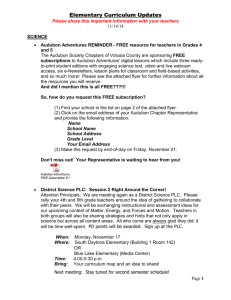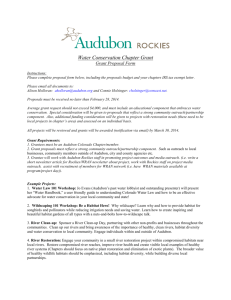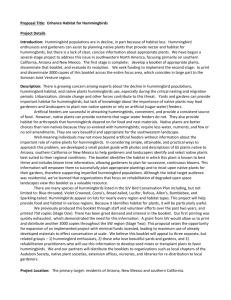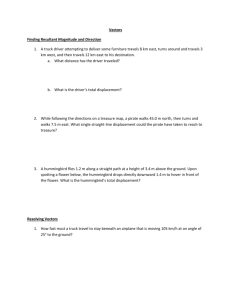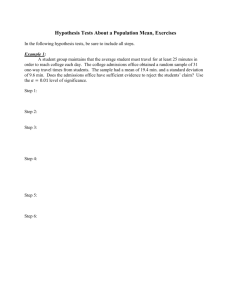Common Name (Scientific name)
advertisement
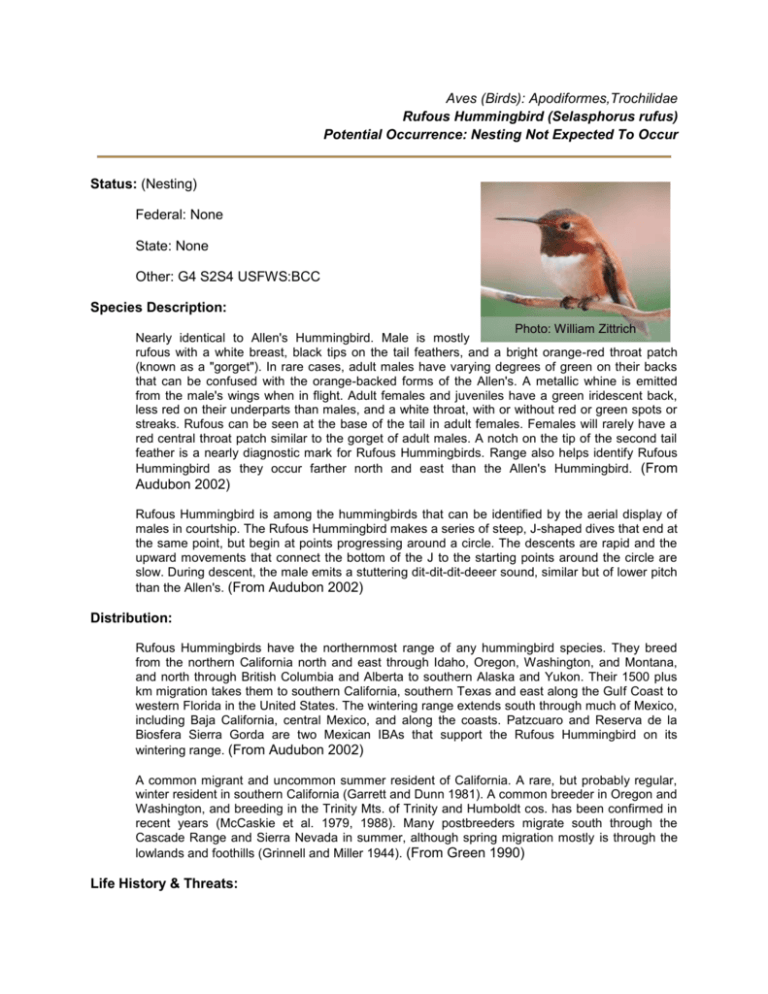
Aves (Birds): Apodiformes,Trochilidae Rufous Hummingbird (Selasphorus rufus) Potential Occurrence: Nesting Not Expected To Occur Status: (Nesting) Federal: None State: None Other: G4 S2S4 USFWS:BCC Species Description: Photo: William Zittrich Nearly identical to Allen's Hummingbird. Male is mostly rufous with a white breast, black tips on the tail feathers, and a bright orange-red throat patch (known as a "gorget"). In rare cases, adult males have varying degrees of green on their backs that can be confused with the orange-backed forms of the Allen's. A metallic whine is emitted from the male's wings when in flight. Adult females and juveniles have a green iridescent back, less red on their underparts than males, and a white throat, with or without red or green spots or streaks. Rufous can be seen at the base of the tail in adult females. Females will rarely have a red central throat patch similar to the gorget of adult males. A notch on the tip of the second tail feather is a nearly diagnostic mark for Rufous Hummingbirds. Range also helps identify Rufous Hummingbird as they occur farther north and east than the Allen's Hummingbird. (From Audubon 2002) Rufous Hummingbird is among the hummingbirds that can be identified by the aerial display of males in courtship. The Rufous Hummingbird makes a series of steep, J-shaped dives that end at the same point, but begin at points progressing around a circle. The descents are rapid and the upward movements that connect the bottom of the J to the starting points around the circle are slow. During descent, the male emits a stuttering dit-dit-dit-deeer sound, similar but of lower pitch than the Allen's. (From Audubon 2002) Distribution: Rufous Hummingbirds have the northernmost range of any hummingbird species. They breed from the northern California north and east through Idaho, Oregon, Washington, and Montana, and north through British Columbia and Alberta to southern Alaska and Yukon. Their 1500 plus km migration takes them to southern California, southern Texas and east along the Gulf Coast to western Florida in the United States. The wintering range extends south through much of Mexico, including Baja California, central Mexico, and along the coasts. Patzcuaro and Reserva de la Biosfera Sierra Gorda are two Mexican IBAs that support the Rufous Hummingbird on its wintering range. (From Audubon 2002) A common migrant and uncommon summer resident of California. A rare, but probably regular, winter resident in southern California (Garrett and Dunn 1981). A common breeder in Oregon and Washington, and breeding in the Trinity Mts. of Trinity and Humboldt cos. has been confirmed in recent years (McCaskie et al. 1979, 1988). Many postbreeders migrate south through the Cascade Range and Sierra Nevada in summer, although spring migration mostly is through the lowlands and foothills (Grinnell and Miller 1944). (From Green 1990) Life History & Threats: Takes nectar from many species of flowering plants; also eats insects, spiders and tree sap. Hovers while taking nectar and insects, which it gleans from foliage and flowers; also hawks insects from air… Merlins sometimes prey on this species (Bent 1940). Owls, other hawks, and weasels are suspected predators. Greatest danger probably unseasonable cold that kill nectar sources and insects. Hummingbirds are important pollinators of specially adapted plants. (From Green 1990) In courtship, the male attracts the female with an aerial display. He dives close to a female, his feathers making a loud whining sound near the bottom of an oval trajectory. Rufous Hummingbirds are highly territorial, defending feeding territories not only while breeding but also during migration. Rufous Hummingbirds do not sing but make warning chips in response to perceived threats. Their wings make a whine much like the sound of a cicada. (From Birdweb 2008) Nesting recently confirmed in northwestern mt. ranges. In Oregon, the breeding season extends from late April through July. Perhaps less promiscuous than other North American hummingbirds; males have been observed incubating (Johnsgard 1983). Female sometimes nests close to others in favorable areas. Usually 2 eggs laid; occasionally 1or3. No reports of double-brooding found. Incubation period unknown, but probably close to other Selasphorus (16-22 days for Allen's hummingbird). Altricial young tended by female until fledging at 22 days. Female performs most nesting duties. (From Green 1990) Both the breeding and wintering ranges are subject to extensive logging. The spring migration route (through the Pacific Coast areas of California, Oregon, and Washington) is subject to extensive human development. (From Audubon 2010) Habitat & Habitat Associations: Foraging Sites/Migration: Found in a wide variety of habitats that provide nectar-producing flowers; uses valley foothill hardwood, valley foothill hardwood-conifer, riparian, and various chaparral habitats in both northward and southward migration; montane riparian, aspen, and high mountain meadows (to tree-line and above) used in southward migration. (From Green 1990) Nesting Sites: Breeding areas north of California in coniferous forests (Johnsgard 1983); nest variously placed in berry tangles, shrubs, and conifers. Nest is an open cup, usually on a sloping branch near ground (Harrison 1978). Probably uses similar sites in northwestern California. May rebuild on old nest. (From Green 1990) Nests hidden in layers of shrub or drooping branches of oaks and conifers. Has been reported to nest in colonies (up to 20 nests within a few yards of each other). (From Audubon 2002) Conceptual Basis for GIS Model Development: Potential habitat for this species occurs throughout the Study Area. We identified potential nesting habitat as coniferous forest (i.e., Redwood-Douglas fir mix (Sequoia sempervirens-Pseudotsuga menziesii) and Pacific Douglas fir (Pseudotsuga menziesii var.menziesii) vegetation types.) Potential Occurrence in the Galbreath Wildlands Preserve: Protection status for this species applies to nesting individuals. Habitat: The quality of nesting habitat for this species is good in the Preserve (Figure 68). Coniferous forests are high quality and abundant throughout the Preserve. Nearest Occurrence: Documented Occurrences in the Galbreath Wildlands Preserve: This species has not been documented nesting on the Preserve. To our knowledge no surveys have been conducted. Nearest Occurrence to the Galbreath Wildlands Preserve: Allen’s Humminbirds commonly breed in Oregon and Washington and have only recently been documented to breed in Trinity and Humboldt counties, over 80 miles north of the Preserve. Summary: Nesting this common migrant is “Not Expected to Occur” in the Preserve. While nesting habitat appears to be abundant, the Preserve is over 80 miles south of the southernmost documented occurrence of breeding individuals. References Audubon. 2002. Audubon Watchlist: Rufous Hummingbird. National Audubon Society. <http://audubon2.org/watchlist/viewSpecies.jsp?id=179>. 2010 July 25. Audubon. 2010. Common Birds in Decline: Rufous Hummingbird. National Audubon Society. <http://stateofthebirds.audubon.org/cbid/profile.php?id=16>. 2010 July 25. Birdweb. 2008. Rufous Hummingbird. Seattle Audubon Society. <http://www.seattleaudubon.org/birdweb/bird_details.aspx?id=265>. 2010 July 21. Green M. 1990. Rufous Hummingbird. California Wildlife Habitat Relationships System. <http://nrm.dfg.ca.gov/FileHandler.ashx?DocumentID=1907>. 2010 July 25. Zittrich W. 2009. Rufous Hummingbird Photo. Smithsonian Migratory Bird Center. <http://nationalzoo.si.edu/scbi/MigratoryBirds/Life_History/default.cfm?id=55>. 2010 July 21. Species Account Description: Emily Harvey

